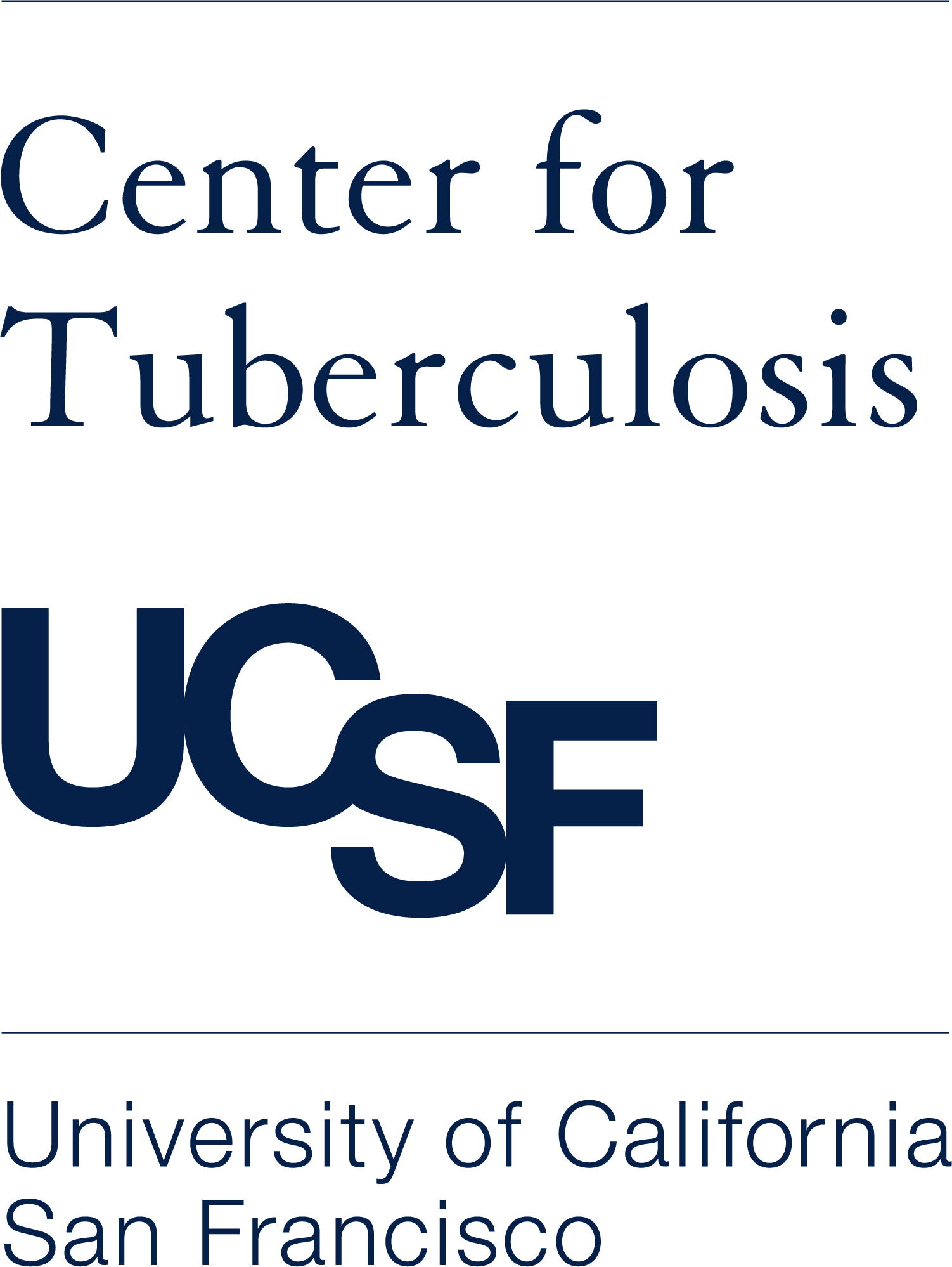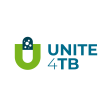The role of tyrosine metabolism in tuberculosis pathogenesis
Tuberculosis (TB) is a leading cause of death globally. It remains unclear why only a small number of Mycobacterium tuberculosis (Mtb)-infected individuals progress to TB disease. Mtb is known to rewire the immunometabolism of infected monocyte-derived phagocytes following acute infection. Consistently, systemic shifts in metabolism are a hallmark of TB pathogenesis, thus highlighting metabolism as a possible target for intervention. Tyrosine, an aromatic amino acid, is shown to accumulate in the serum of TB patients compared to healthy controls. However, it is unknown whether and how defects in tyrosine metabolism could mediate susceptibility to Mtb infection or risk of TB progression. We found that Mtb infection of primary human myeloid cells downregulates expression of Fumarylacetoacetate hydrolase (FAH); a key enzyme involved in tyrosine catabolism. We also identified a genetic variant associated with lower FAH expression in monocyte-derived dendritic cells (DCs) in Peruvians who progressed to TB. We previously showed accumulation of tyrosine in the plasma of prospectively enrolled African household contacts of TB patients who progress to TB compared to non-progressors, consistently with a role for tyrosine catabolism in protection from TB. Importantly, knocking out FAH in murine macrophages increased their susceptibility to Mtb infection, suggesting that impaired tyrosine metabolism by FAH may drive loss of Mtb control. Mechanistically, tyrosine metabolites may contribute to the altered metabolic states of Mtb-infected cells. We hypothesize that Mtb-mediated interference with tyrosine metabolism has evolved as a mechanism of virulence and could mediate progression to TB disease. We propose a series of in vitro and in vivo experiments to define the requirement for host tyrosine metabolism following Mtb infection. We will target FAH using gene editing of primary human myeloid cells to test whether this key step in tyrosine metabolism is required to contain Mtb infection. We also plan to adoptively transfer fah- deficient fetal liver cells into TB-susceptible mice to test the requirement for tyrosine metabolism in hematopoietic cells to control Mtb infection in vivo. Secondly, we will define the metabolic consequences of FAH deletion in Mtb-infected monocyte-derived DCs and macrophages using metabolic flux experiments, and metabolite complementation of Mtb-infected FAH-deficient cells. Finally, we will leverage samples and datasets from two independent cohorts of different TB disease states. The first is a cross-sectional Peruvian cohort of TB patients and Mtb-infected and uninfected contacts, where we bio-banked plasma samples for targeted analysis of tyrosine metabolites by high resolution mass spectrometry. The second is a previously described longitudinal cohort of African household contacts of TB patients followed for 2 years, where we also obtained genotyping data to explore the impact of polymorphisms in select metabolic genes on expression of tyrosine metabolites. Defining a causal association between impaired tyrosine metabolism and TB risk would motivate for future trials to repurpose existing agents to treat inborn errors of tyrosine metabolism as host-directed treatments against TB.
---
Live Imaging of Immunity to M. tuberculosis
In this project, we propose to combine a unique multiphoton microscopy system for intravital imaging, contained in a Biosafety Level 3 facility at the IPBS in Toulouse, with unique reporter mice and M. tuberculosis strains developed and characterized at UCSF, to characterize interactions of antigen-specific CD4 T cells with M. tuberculosis-infected and bystander cells in the lungs of live mice. The combination of these innovative experimental systems allows us to test specific hypotheses that can account for the spatial and functional separation of CD4 T cells and M. tuberculosis-infected cells in the lungs. The knowledge gained from these studies will be used: 1) to inform design of experiments to define the molecular mechanisms that restrict CD4 T cell interactions with M. tuberculosis-infected cells in vivo; 2) to provide the basis for studies comparing distinct candidate TB vaccines, to determine which of them promote development of T cells that optimally access M. tuberculosis-infected cells in granuloma cores.
Sponsor: National Institute of Allergy and Infectious Diseases
PI: Joel Ernst, MD
---
Host genetic diversity, mononuclear phagocytes, and outcomes of TB
The development of Collaborative Cross mice, together with initial studies that reveal that CC001 and CC002 mice are more able to clear M. tuberculosis than are B6 mice, provides the opportunity to better understand the mechanisms of immunity to TB in a highly tractable and economical experimental model. Four elements provide the basis for our proposed approach to using CC001 and CC002 mice to better understand the mechanisms of protective immunity to TB. They are: 1) M. tuberculosis resides in macrophages and other antigen-presenting cells (collectively termed mononuclear phagocytes) in the lungs; 2) the superior control of M. tuberculosis in CC001 and CC002 mice is observed after development of adaptive (T cell) immunity; 3) CD4 T cells are essential for protective immunity to TB in mice and humans; 4) CD4 T cells must interact with macrophages and other mononuclear phagocytes (MNP) to provide protective immunity to TB. Therefore, we propose a two-part working hypothesis: i) CD4 T cell responses are more effective against M. tuberculosis in CC001 and CC002 than in B6 mice; and ii) CD4 T cell responses are more effective due to superior antigen-presenting and/or antimycobacterial activities of MNP in CC001 and CC002, compared with B6, mice. We anticipate that our discoveries will provide a basis for translational studies in humans, and that they will contibute to development of host-directed therapies and efficacious vaccines for TB.
Sponsor: National Institute of Allergy and Infectious Diseases
PI: Joel Ernst, MD
---
Host genetic diversity, T cell responses, and outcomes of TB
The evidence that the Collaborative Cross mouse strains, CC001 and CC002, are more able to clear M. tuberculosis than are C57BL/6 (B6) mice, provides the opportunity to better understand the mechanisms of immunity to TB in a highly tractable and economical experimental model. Two major lines of evidence provide the basis for the studies proposed in this application: 1) the superior control of M. tuberculosis in CC001 and CC002 (compared to B6) mice is observed after development of adaptive immune responses; 2) CD4 T cells are essential and dominant contributors to adaptive immunity to TB in mice and humans. Therefore, we propose intensive comparative studies using innovative new tools to test the hypothesis that CD4 T cells in the lungs of M. tuberculosis-infected CC001 and CC002 mice are functionally superior to those in B6 mice, and to determine the mechanistic basis of their functional superiority. We anticipate that our results will provide a basis for translational studies in humans, and that they will contribute to development of more efficacious vaccines for TB.
Sponsor: National Institute of Allergy and Infectious Diseases
PI: Joel Ernst, MD
---
Antigen export in M. tuberculosis evasion of CD4 T cells
The long term objective of this project is to guide development of efficacious TB vaccines by: 1) characterizing a major mechanism that limits the ability of antigen-specific CD4 T cells to recognize M. tuberculosis-infected cells and become activated at the site of infection; and 2) developing solutions that overcome or bypass that mechanism. This project will extend these findings and characterize the other cellular mechanisms required for antigen export, including budding of antigen export vesicles (AEV) from phagosomes, intracellular targeting of AEV, and fusion of AEV membranes with the plasma membrane for release of antigens to the extracellular space. Our goal is to identify host molecules that can be targeted with drugs to block antigen export and make antigen-specific CD4 T cells more effective in TB.
Sponsor: NIH, NIAID
PI: Joel Ernst, MD
---
Studies of the antibacterial activity of and resistance to molecules targeting the ClpP peptidase
Well-validated, yet grossly under-exploited vulnerabilities of pathogenic bacteria are the intracellular proteases that are essential for their viability, virulence, and/or survival in human hosts. This proposal seeks to understand and develop bactericidal molecules that act via the activation or inhibition the essential ClpP protease in Mycobacterium tuberculosis, the deadliest bacterial pathogen. Molecules motivating this research have the potential to be first-in-class drugs for the treatment of tuberculosis or will inspire new strategies for the treatment of this and other bacterial infections.
Sponsor: NIH, National Institute of Allergy and Infectious Diseases
PI: Jason Sello, PhD
---
Describing the innate immune response of mycobacterium tuberculosis at a single-cell resolution
Despite decades of investigation, little is known about the early interactions of MTB and the innate immune system. Our group has investigated the cellular recruitment of innate immune cells using these methods. We have shown mononuclear phagocytes (MPs) recruited during MTB infection are heterogeneous and dynamic through time. In early infection, preliminary results demonstrate a differential cell type involvement and rate of MTB cell-to-cell transfer depending on the bacterial strain. We propose utilizing scRNA-seq for the first time in MTB-infected mice. This technology will allow us to describe the mononuclear phagocyte population involved in the early stages of MTB infection, and elucidate which cell types are conducive or resistant to MTB growth. We will investigate changes in this population in the absence of T cells and in the absence of a critical MTB virulence factor, ESX-1. In addition, we will describe the cellular pathway of infection over time to elucidate cell-to-cell transfer in the presence and absence of T cells and ESX- 1. In this way, we can begin to understand both the role of the host and the bacteria in the early stages of infection, and provide essential information for the development of an effective vaccine against infection via intercepting MTB cellular transfer.
Sponsor: NIH, National Heart, Lung, and Blood Institute
---
Pan-vaccine Analysis to Test the Impact of Cytomegalovirus on Vaccine Efficacy
Cytomegalovirus (CMV) infects around 50% of the US population. Even though the CMV exists in a latent state in healthy individuals, it profoundly shapes the immune system. Recent studies suggest that the CMV infection alters the immune response to influenza vaccine. However, the exact effect of CMV on the efficacy of the influenza vaccine remains controversial. In addition, how CMV shapes the immune responses toward other vaccines are unknown. We hypothesize that latent CMV infection induces critical changes in the immune system, which alters the efficacy of multiple types of vaccines. The ImmPort database currently hosts 133 vaccine studies, covering 21 types of vaccines, creating an unprecedented opportunity for us to test our hypothesis. We will perform a comprehensive meta-analysis to test the relationship between CMV and vaccine efficacies, and will use state-of-art statistical models (e.g., Dynamic Bayesian Network) to identify the mechanism by which CMV alters the vaccine response. Leveraging the group's expertise in computational immunology and rich datasets on ImmPort, we will address the following aims. Aim1: Test the effect of CMV on influenza vaccine outcome. We will perform a meta-analysis of 60 influenza studies available on ImmPort to test the impact of CMV. We will quantify and standardize the efficacy of influenza vaccine across studies, which are measured by hemagglutinin inhibition (HAI) assays before and after the vaccination. We will also determine the CMV infection status in subjects, either directly from serological tests or indirectly from immune- phenotyping data using cutting-edge machine learning tools. We will then test if CMV increases the response to influenza vaccine by analyzing data from all studies in a unified statistical framework while taking the heterogeneity between studies into account. Aim2: Bayesian network analysis of influenza vaccine response. We will harmonize multimodal immune-phenotyping data from the influenza vaccine studies, including transcriptomics data, cytometry data, and cytokine measurements. We will use state-of-art network analysis methods (e.g., Dynamic Bayesian network) to model the interplay between the immune components over time. Using the Bayesian network, we will investigate the mechanism by which CMV shapes the outcome of influenza vaccination. Aim3: Explore the effect of CMV infection on other vaccines. We will extend our analysis to vaccines other than influenza vaccine, (e.g., West Nile, Hepatitis B, yellow fever, malaria, and Tuberculosis). We will quantify the vaccine efficacy using assays specific to the vaccine type, such as Controlled Human Malaria Infection (CHMI) for the malaria vaccine and Plaque Reduction Neutralization Test for the yellow fever vaccine. We will perform separate network analyses to characterize the relationship between CMV and the immune response of individual vaccines. We will then perform joint analysis across vaccine types to identify the common impact of CMV across vaccine types.
Sponsor: NIH, National Institute of Allergy and Infectious Diseases
PI: Zicheng Hu, PhD
---
Research Project 2: Genetic Identification of Host Innate Pathways that Control Bacterial Pathogenesis
Phagocytes of the mammalian innate immune system, in particular macrophages and neutrophils, form the first line of defense upon bacterial infection and are armed with powerful mechanisms to limit bacterial growth and eradicate invaders. Bacterial pathogens, however, have evolved mechanisms to thwart these killing mechanisms of phagocytes, and to persist in human tissues. In addition to having direct antimicrobial activity, macrophages and neutrophils also initiate and shape powerful inflammatory responses that dramatically influence disease. Indeed, the inflammatory pathways elicited by each of the pathogens involved in this study - Mycobacterium tuberculosis (Mtb), Staphylococcus aureus (SA), and Chlamydia trachomatis (CT) - play major roles in bacterial persistence in tissues and in promoting disease. Pathogens must subvert these cells in order to grow and persist, but the host genes and cellular pathways that dictate the outcome of infection are not entirely clear. The broad idea of this proposal is to use unbiased, systematic approaches to probe the intimate interactions between pathogen and innate immune cells, and to use this information to make predictions about bacterial infectivity that will be tested in human samples in an iterative fashion to model host response during infection. We propose to systematically identify innate immune gene networks that underlie pathogenesis in clinically relevant model systems of infections with these three important bacterial pathogens. Using powerful CRISPR-based knockout strategies in both ex vivo infections and in mouse models, coupled with innovative approaches to identify functionally relevant polymorphisms in clinical samples, we seek to dramatically increase our understanding of infection biology of humans. We anticipate that these insights, coupled with the other elements of the HPMI Center, will point to novel vulnerabilities with therapeutic relevance.
Sponsor: NIH, National Institute of Allergy and Infectious Diseases
PI: Jeffery Cox, PhD
---
Deciphering the role of autophagy receptor phosphorylation and host kinases in the targeting of M. tuberculosis to autophagy
To develop alternative therapies, this proposal seeks to find new immune pathways responsible for controlling TB survival in macrophages. One innate immune response that can be anti-bacterial is autophagy. In selective autophagy, macrophages sense pathogens that access the cytosol and trigger the activation of kinases, which phosphorylate autophagy adaptors and thereby target the microbe for destruction in the lysosome. TANK-binding kinase 1 (TBK1) and PTEN-induced putative kinase 1 (PINK1) are two macrophage kinases implicated in autophagy targeting of bacteria, but the identity of their phosphorylated substrates and potential role of PINK1 in autophagy of TB are unclear. To determine the kinase substrates, we will complete our analysis of changes in the phosphoproteome during TB infection in bone marrow-derived macrophages from kinase-deficient mice (Aim 1). Phosphoproteomics and immunofluorescence microscopy revealed four autophagy receptors colocalize with TB and three of them are phosphorylated. To determine the role of these formerly unrecognized autophagy adaptors in autophagosomal targeting of TB, we will obtain targeted knockout mice or use CRISPR/Cas9 to create macrophages with autophagy adaptor mutations and quantify autophagy targeting, inflammatory responses, and bacterial growth in the adaptor deficient cells (Aim 2). By understanding the mechanism of autophagy targeting of TB, we may be able to design host-directed therapies for TB.
Sponsor: NIH, National Institute of Allergy and Infectious Diseases
---
CORE 2: Technology Core
The objective of the Technology Core is to provide cutting-edge and innovative technologies for the functional characterization of the genome and proteome in a reliable, reproducible, and cost-efficient manner. It will support Project 1 and Project 2 by facilitating proteomics, genetic interaction, and structural protein characterization experiments. In particular, the Technology Core will perform mass spectrometry characterization of host-pathogen protein-protein interactions (PPIs) and infection induced signaling network rewiring, CRISPR gene editing, and structural characterization by x-ray crystallography, cryo-electron microscopy (cryo-EM), and cross-link mass spectrometry (XL-MS). The technologies will be used extensively by Project 1 and Project 2 investigators to accomplish the individual aims of this proposal, and will also serve as a resource to the wider scientific community by disseminating new assays and protocols.
Sponsor: NIH, National Institute of Allergy and Infectious Diseases
---



